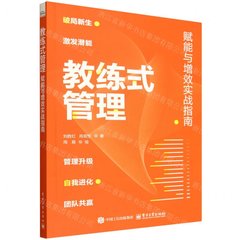Fundamental Modeling Concepts: Effective Communication of IT Systems
暫譯: 基本建模概念:有效溝通IT系統
Andreas Knopfel, Bernhard Grone, Peter Tabeling
- 出版商: Wiley
- 出版日期: 2006-05-01
- 定價: $2,970
- 售價: 8.5 折 $2,525
- 語言: 英文
- 頁數: 352
- 裝訂: Paperback
- ISBN: 047002710X
- ISBN-13: 9780470027103
-
相關分類:
Domain-Driven Design
立即出貨 (庫存 < 3)
買這商品的人也買了...
-
 JavaScript 大全 (JavaScript: The Definitive Guide, 4/e)
JavaScript 大全 (JavaScript: The Definitive Guide, 4/e)$900$711 -
 程式設計專家手冊 (The Practice of Programming)
程式設計專家手冊 (The Practice of Programming)$420$332 -
 CCNA Self-Study: Interconnecting Cisco Network Devices (ICND) 640-811, 640-801, 2/e
CCNA Self-Study: Interconnecting Cisco Network Devices (ICND) 640-811, 640-801, 2/e$2,260$2,147 -
 Windows CE 嵌入式系統理論與實務
Windows CE 嵌入式系統理論與實務$680$537 -
 ASP.NET 徹底研究進階技巧─高階技巧與控制項實作
ASP.NET 徹底研究進階技巧─高階技巧與控制項實作$650$507 -
 最新詳解 Javascript & HTML & CSS 語法辭典(增訂新版)
最新詳解 Javascript & HTML & CSS 語法辭典(增訂新版)$490$382 -
 Linux Mail Server 技術實務─架設、稽核、防毒、防垃圾信
Linux Mail Server 技術實務─架設、稽核、防毒、防垃圾信$580$458 -
 軟體預先架構之美學 (Prefactoring)
軟體預先架構之美學 (Prefactoring)$580$458 -
 SQL Server 2005 資料庫開發聖經
SQL Server 2005 資料庫開發聖經$890$757 -
 如何設計好網站 (Don't Make Me Think: A Common Sense Approach to Web Usability, 2/e)
如何設計好網站 (Don't Make Me Think: A Common Sense Approach to Web Usability, 2/e)$450$383 -
 Java Puzzler 中文版─陷阱、錯誤 (Java Puzzlers: Traps, Pitfalls, and Corner Cases)
Java Puzzler 中文版─陷阱、錯誤 (Java Puzzlers: Traps, Pitfalls, and Corner Cases)$520$442 -
 Microsoft SQL Server 2005 設計實務
Microsoft SQL Server 2005 設計實務$680$537 -
 Visual Basic 2005 程式開發與介面設計秘訣
Visual Basic 2005 程式開發與介面設計秘訣$720$569 -
 專案管理之美學 (The Art of Project Management)
專案管理之美學 (The Art of Project Management)$620$490 -
 Ajax 網頁程式設計─Google 成功背後的技術
Ajax 網頁程式設計─Google 成功背後的技術$580$458 -
 Ajax 與 Google Map API 入門實作
Ajax 與 Google Map API 入門實作$450$351 -
 最新 JavaScript 與 Ajax 範例活用辭典
最新 JavaScript 與 Ajax 範例活用辭典$390$304 -
 ASP.NET 2.0 深度剖析範例集
ASP.NET 2.0 深度剖析範例集$650$507 -
 Microsoft SQL Server 2005 管理實務
Microsoft SQL Server 2005 管理實務$680$537 -
 操作介面設計模式 (Designing Interfaces)
操作介面設計模式 (Designing Interfaces)$880$695 -
 MySQL 5 徹底研究, 3/e (The Definitive Guide to MySQL 5, 3/e)
MySQL 5 徹底研究, 3/e (The Definitive Guide to MySQL 5, 3/e)$690$538 -
 Ajax 實戰手冊 (Ajax in Action)
Ajax 實戰手冊 (Ajax in Action)$680$537 -
 Ajax 技術手冊 (Foundations of Ajax)
Ajax 技術手冊 (Foundations of Ajax)$450$356 -
 世紀末軟體革命復刻版:C++、GUI 與物件導向理論
世紀末軟體革命復刻版:C++、GUI 與物件導向理論$620$527 -
 聖殿祭司的 ASP.NET 2.0 專家技術手冊─使用 C#
聖殿祭司的 ASP.NET 2.0 專家技術手冊─使用 C#$720$569
商品描述
A must-have book for systems analysts, architects and managers interested in enhancing successful communication in their organisation.
- Provides detailed examples of how to understand and implement ‘fundamental modeling concepts’ for IT-systems communication
- Provides an already successfully implemented model that has been used at: Siemens, Alcatel, SAP and others
- Benefits from extensive theoretical and practical research
- Provides guidelines on how ‘fundamental modeling concepts’ can be used to support UML, OO, MDA and Architectural Patterns
Table of Contents
Foreword.
Preface.
1 Introduction.
1.1 The need for communication.
1.2 The FMC Idea.
1.3 Outline of this book.
2 Compositional Structures.
2.1 An example: The travel agency.
2.2 Modeling the structure of a system.
2.3 Agents accessing storages.
2.4 Agents communicate via channels.
2.5 Summary.
2.6 Exercises.
3 Dynamic Structures.
3.1 Petrinets: Basic principles.
3.2 Conflicts and conditions.
3.3 Basic patterns.
3.4 Responsibilities and scope boundaries.
3.5 Summary.
3.6 Exercises.
4 Value Structures and Mind Maps.
4.1 Entity sets and relationships.
4.2 Cardinalities.
4.3 Predicates and roles.
4.4 Partitions.
4.5 Reification.
4.6 Summary.
4.7 Exercises.
5 FMC Basics: Summary.
6 Reinforcing the Concepts.
6.1 The meta model: A mind map to FMC.
6.2 Operational versus control state.
6.3 Block diagrams: Advanced concepts.
6.4 Petrinets: Advanced concepts.
6.5 Non-hierarchical transformations and semantic layers.
6.6 Exercises.
7 Towards Implementation Structures.
7.1 System structure versus software structure.
7.2 From Processor to processes.
7.3 Distribution, concurrency and synchronization.
7.4 From FMC to objects and classes.
7.5 Conceptual patterns versus software patterns.
8 Applying FMC in Your Daily Work.
8.1 Becoming comfortable with FMC.
8.2 Describing existing systems with FMC.
8.3 Using FMC in construction.
8.4 Using FMCdiagrams to support communication.
8.5 Guidelines for didactical modeling.
8.6 Cost and benefit of modeling.
9 Modeling and Visualization Guidelines.
9.1 Introduction.
9.2 Increasingt he reader’s perception.
9.3 Increasing comprehension.
9.4 Secondary notation, patterns and pitfalls.
10 Relationship with Other Modeling Approaches.
10.1 Comparing FMC with Structured Analysis.
10.2 FMC and the Unified Modeling Language.
11 A System of Server Patterns 247
11.1 Applicationdomain.
11.2 A pattern language for request processing servers.
11.3 Example applications.
11.4 Conclusion and further research.
Epilogue.
A Solutions.
B Reference Sheets.
C Glossary.
References.
Index.
商品描述(中文翻譯)
**描述**
這是一本系統分析師、架構師和管理者必備的書籍,旨在提升其組織內部的成功溝通。
- 提供詳細範例,說明如何理解和實施 IT 系統溝通的「基本建模概念」
- 提供一個已成功實施的模型,該模型已在西門子(Siemens)、阿爾卡特(Alcatel)、SAP 等公司使用
- 受益於廣泛的理論和實踐研究
- 提供指導,說明如何使用「基本建模概念」來支持 UML、面向對象(OO)、模型驅動架構(MDA)和架構模式
**目錄**
**前言。**
**序言。**
**1 引言。**
1.1 溝通的需求。
1.2 FMC 概念。
1.3 本書大綱。
**2 組合結構。**
2.1 一個範例:旅行社。
2.2 建模系統的結構。
2.3 代理訪問存儲。
2.4 代理通過通道進行溝通。
2.5 總結。
2.6 練習。
**3 動態結構。**
3.1 彼得網(Petrinets):基本原則。
3.2 衝突和條件。
3.3 基本模式。
3.4 責任和範圍邊界。
3.5 總結。
3.6 練習。
**4 價值結構和思維導圖。**
4.1 實體集和關係。
4.2 基數。
4.3 謂詞和角色。
4.4 分區。
4.5 實體化。
4.6 總結。
4.7 練習。
**5 FMC 基礎:總結。**
**6 強化概念。**
6.1 元模型:FMC 的思維導圖。
6.2 操作狀態與控制狀態。
6.3 方塊圖:進階概念。
6.4 彼得網:進階概念。
6.5 非層級轉換和語義層。
6.6 練習。
**7 朝向實施結構。**
7.1 系統結構與軟體結構。
7.2 從處理器到過程。
7.3 分佈、併發和同步。
7.4 從 FMC 到物件和類別。
7.5 概念模式與軟體模式。
**8 在日常工作中應用 FMC。**
8.1 使自己熟悉 FMC。
8.2 使用 FMC 描述現有系統。
8.3 在建設中使用 FMC。
8.4 使用 FMC 圖表支持溝通。
8.5 教學建模的指導方針。
8.6 建模的成本與效益。
**9 建模和可視化指導方針。**
9.1 引言。
9.2 提高讀者的感知。
9.3 提高理解。
9.4 次要標記、模式和陷阱。
**10 與其他建模方法的關係。**
10.1 將 FMC 與結構化分析進行比較。
10.2 FMC 與統一建模語言(UML)。
**11 伺服器模式系統**
11.1 應用領域。
11.2 請求處理伺服器的模式語言。
11.3 範例應用。
11.4 結論與進一步研究。
**後記。**
**A 解決方案。**
**B 參考資料表。**
**C 詞彙表。**
**參考文獻。**
**索引。**






























